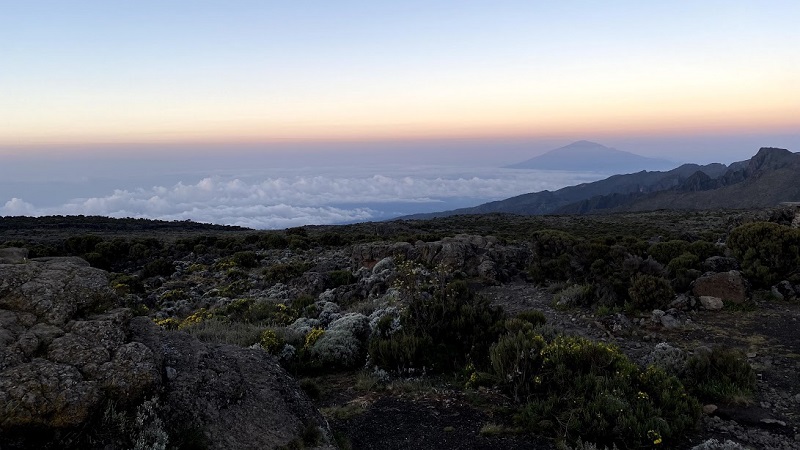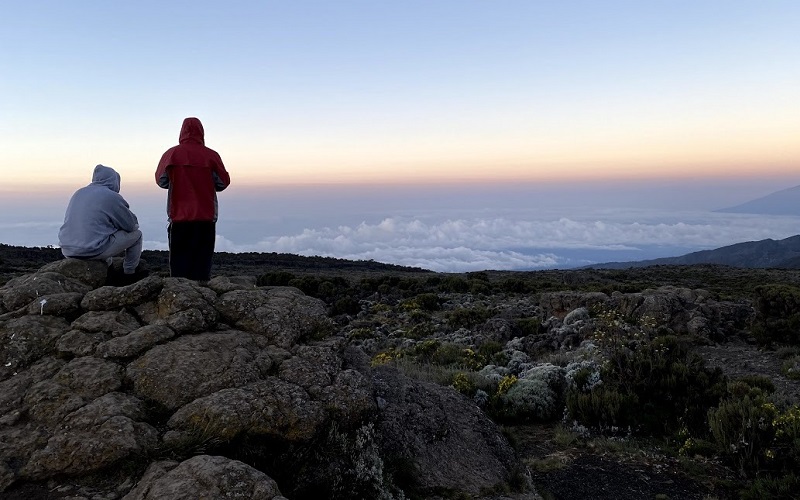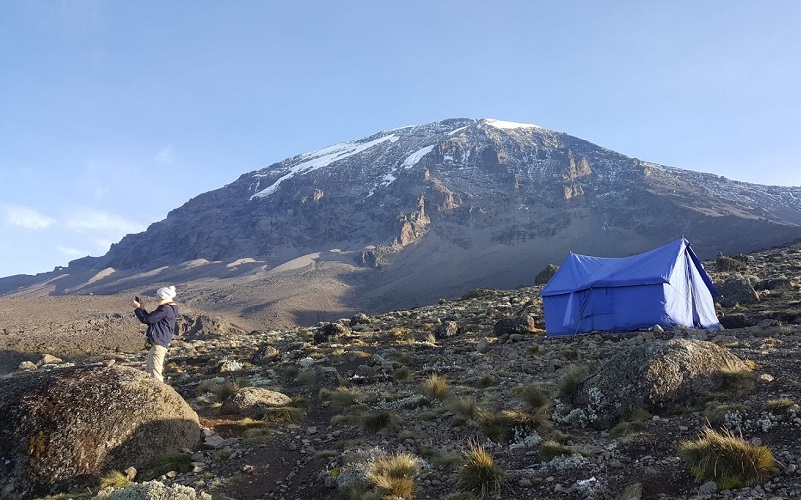
Rongai Route: A Quiet Ascent from the North
The Rongai Route is one of the less-traveled paths up Mount Kilimanjaro, offering a quieter and more remote experience compared to the more popular routes. Ascending from the northeastern side of the mountain along the border between Tanzania and Kenya, this route provides a unique perspective of Kilimanjaro, approaching it from the north.
Route Overview
Duration: 6-7 days
Distance: 73 km (45 miles)
Difficulty: Moderate to Challenging
Best for: Climbers looking for a less-crowded route and a more secluded experience.
Scenic Highlights
The Rongai Route is known for its untouched wilderness and striking contrasts in landscape. As you ascend, you’ll pass through a variety of ecosystems, including:
Rainforests: The lower part of the route begins in a lush rainforest, offering a serene and tranquil hiking environment.
Heath and Moorland: As you climb higher, you’ll cross heath and moorland zones, with expansive views of the surrounding valleys and the distant Kenyan plains.
Kibo Summit: The route approaches Kibo Peak via the scree summiting path from Kibo Hut to Gilman’s Point. From here, you’ll make the final push to the summit.
The Rongai Route offers less crowded campsites and a chance to experience a quieter, more peaceful ascent compared to other more popular routes.
Climbing Challenges: Altitude and Acclimatization
While the Rongai Route is known for its remoteness and scenic beauty, it presents challenges related to altitude acclimatization. The topography of the route does not fully allow climbers to apply the recommended “climb high, sleep low” principle, which helps mitigate the risk of altitude sickness. As a result, climbers on this route are more likely to suffer from altitude-related issues compared to other routes. To improve your chances of success, it is highly recommended to add an extra acclimatization day at Mawenzi Tarn on the 7-day itinerary. This additional day allows your body to better adjust to the increasing altitude and enhances your chances of reaching the summit.
Summit and Descent
The summit route on the Rongai Route follows the scree path from Kibo Hut to Gilman’s Point and then continues to the summit at Uhuru Peak. After reaching the summit, climbers descend via the Marangu Route, which is a more gradual descent path.
Rongai 6-Day vs 7-Day Itinerary
6-Day Route: This option is faster but includes less time for acclimatization, which can increase the risk of altitude sickness. It is ideal for those with more experience and who are in excellent physical condition.
7-Day Route: The 7-day itinerary includes an extra acclimatization day at Mwenzi Tarn, which allows your body to adjust more effectively to the altitude, improving your chances of a successful summit.
Why Choose the Rongai Route?
The Rongai Route is perfect for climbers who want a quieter, more secluded trek with a different perspective of Mount Kilimanjaro. It’s ideal for those seeking a less-crowded adventure, with the added benefit of approaching Kilimanjaro from the north, offering unique landscapes and experiences.
Pros:
Less crowded: The Rongai Route is quieter, especially in the early stages of the climb.
- Scenic and remote: The route offers a peaceful, wilderness experience with varied ecosystems.
- Ideal for rainy season: Because the route ascends from the north, it’s often a good choice during the rainy season when the southern routes are wetter.
Cons:
- Altitude issues: The lack of opportunities for proper acclimatization increases the risk of altitude sickness, making the 7-day itinerary highly recommended.
- Tough summit path: The summit path via scree can be strenuous, and climbers need to be prepared for the final push.



